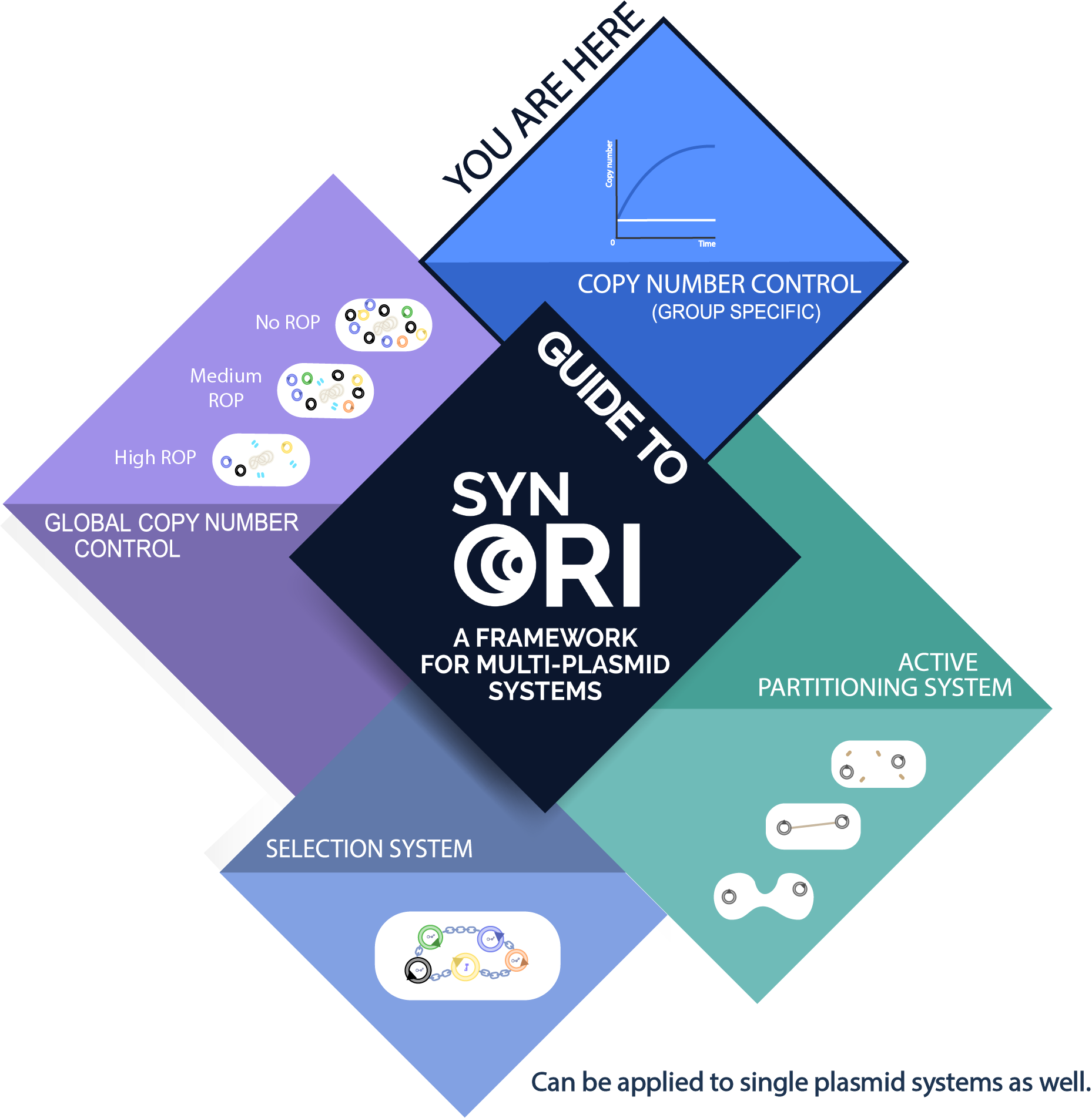Difference between revisions of "Part:BBa K2259091"
| Line 27: | Line 27: | ||
===ColE1 plasmid replication overview=== | ===ColE1 plasmid replication overview=== | ||
| − | [[Image:Cole1 horizontal cropped.png|300px| | + | [[Image:Cole1 horizontal cropped.png|center|frame|300px|<b>Figure 1. </b> Main principles of ColE1 plasmid family replication]] |
| − | <b | + | |
| Line 38: | Line 38: | ||
The interaction between RNA I and RNA II can be amplified by Rop protein, see [[part:BBa_K2259010]]. | The interaction between RNA I and RNA II can be amplified by Rop protein, see [[part:BBa_K2259010]]. | ||
| + | |||
==Usage with SynORI (Framework for multi-plasmid systems)== | ==Usage with SynORI (Framework for multi-plasmid systems)== | ||
| Line 46: | Line 47: | ||
===This device in SynORI=== | ===This device in SynORI=== | ||
| − | This device demonstrates SynORI framework ability to create an inducible plasmid copy number device. | + | This device demonstrates SynORI framework ability to create an inducible plasmid copy number device. Different rhamnose concentration corresponds to different plasmid copy number, this relationship allows to manipulate copy number of plasmids when required without the need to construct new system or when changes need to be made in a short period of time |
===Further details=== | ===Further details=== | ||
Revision as of 20:11, 1 November 2017
SynORI inducible plasmid copy number device
This device consists of replication initiator RNA II that is modulated by replication regulator RNA I under the control of Rhamnose promoter.
Increased rhamnose concentrations leads to increase in RNA I concentration and consequently - decrease in plasmid copy number.
See how this part fits into the whole SynORI framework by pressing here!
Sequence and Features
- 10COMPATIBLE WITH RFC[10]
- 12COMPATIBLE WITH RFC[12]
- 21COMPATIBLE WITH RFC[21]
- 23COMPATIBLE WITH RFC[23]
- 25COMPATIBLE WITH RFC[25]
- 1000COMPATIBLE WITH RFC[1000]
Contents
Introduction
Biology
ColE1 plasmid replication overview
ColE1-type plasmid replication begins with the synthesis of plasmid encoded RNA II</b> (also called primer transcript) by RNA polymerase which initiates transcription at a site 555bp upstream of origin of replication. The RNA transcript forms a RNA - DNA hybrid with template DNA near the origin of replication. Hybridized RNA is then cleaved at the replication origin by RNAse H and serves as a primer for DNA synthesis by DNA polymerase I (Figure 1. A).[1]
Initiation of replication can be inhibited by plasmid encoded small RNA, called RNA I . Synthesis of RNA I starts 445 bp upstream of the replication origin and proceeds in the direction opposite to that of RNA II synthesis and terminates near the RNA II transcription initiation site. RNA I binds to RNA II and thereby prevents the formation of a secondary structure of RNA II that is necessary for hybridization of RNA II to the template DNA (Figure 1. B).[2]
For RNA I to inhibit primer formation, it must bind before the nascent RNA II transcript extends to the replication origin. Consequently, the concentration of RNA I and the rate of binding of RNA I to RNA II is critical for regulation of primer formation and thus for plasmid replication. [3]
The interaction between RNA I and RNA II can be amplified by Rop protein, see part:BBa_K2259010.
Usage with SynORI (Framework for multi-plasmid systems)
About SynORI
SynORI is a framework for multi-plasmid systems created by Vilnius-Lithuania 2017 which enables quick and easy workflow with multiple plasmids, while also allowing to freely pick and modulate copy number for every unique plasmid group! Read more about [http://2017.igem.org/Team:Vilnius-Lithuania SynORI here]!
This device in SynORI
This device demonstrates SynORI framework ability to create an inducible plasmid copy number device. Different rhamnose concentration corresponds to different plasmid copy number, this relationship allows to manipulate copy number of plasmids when required without the need to construct new system or when changes need to be made in a short period of time
Further details
For more background information and indepth insight on this part's design please see the individual parts page part:BBa_K2259000 and part:BBa_K2259005.
Characterization (Vilnius-Lithuania 2017)
RNA I and rhamnose
References
- ↑ Itoh, T. and Tomizawa, J. (1980). Formation of an RNA primer for initiation of replication of ColE1 DNA by ribonuclease H. Proceedings of the National Academy of Sciences, 77(5), pp.2450-2454.
- ↑ Tomizawa, J. (1984). Control of cole 1 plasmid replication: The process of binding of RNA I to the primer transcript. Cell, 38(3), pp.861-870.
- ↑ Tomizawa, J. (1984). Control of cole 1 plasmid replication: The process of binding of RNA I to the primer transcript. Cell, 38(3), pp.861-870.


